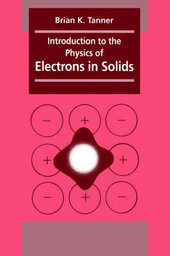
|
Introduction to the Physics of Electrons in Solids
Hardback
Main Details
| Title |
Introduction to the Physics of Electrons in Solids
|
| Authors and Contributors |
By (author) Brian K. Tanner
|
| Physical Properties |
| Format:Hardback | | Pages:268 | | Dimensions(mm): Height 235,Width 156 |
|
| ISBN/Barcode |
9780521239417
|
| Classifications | Dewey:530.41 |
|---|
| Audience | | Tertiary Education (US: College) | |
|---|
|
Publishing Details |
| Publisher |
Cambridge University Press
|
| Imprint |
Cambridge University Press
|
| Publication Date |
30 March 1995 |
| Publication Country |
United Kingdom
|
Description
In this upper-level text, Professor Tanner introduces the reader to the behavior of electrons in solids, starting with the simplest possible model. Unlike other solid state physics texts, this book does not begin with complex crystallography, but instead builds up from the simplest possible model of a free electron in a box and introduces higher levels of complexity only when the simple model is inadequate. The approach is to introduce the subject through its historical development, and to show how quantum mechanics is necessary for an understanding of the properties of electrons in solids. The author also includes an examination of the consequences of collective behavior in the phenomena of magnetism and superconductivity. Examples and problems are included for practice.
Reviews"This is a very attractive book from the standpoint of topics covered, style, and level of presentation." M. Coplan, Choice "...I like this book very much. It provides an ideal introduction to the science behind the ongoing revolutions in microelectronics and microphotonics based on transistors and lasers. The author's enthusiasm for his subject is embodied in a presentation with careful craftsmanship as to principle and disarming charm in selection of materials and examples...designed shrewdly...an excellent choice for an introductory course...Times have changed, and with them the curriculum should change as well. Tanner's book will make changing a pleasure for both students and instructors." J.C. Phillips, Physics Today
|